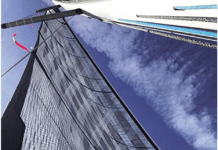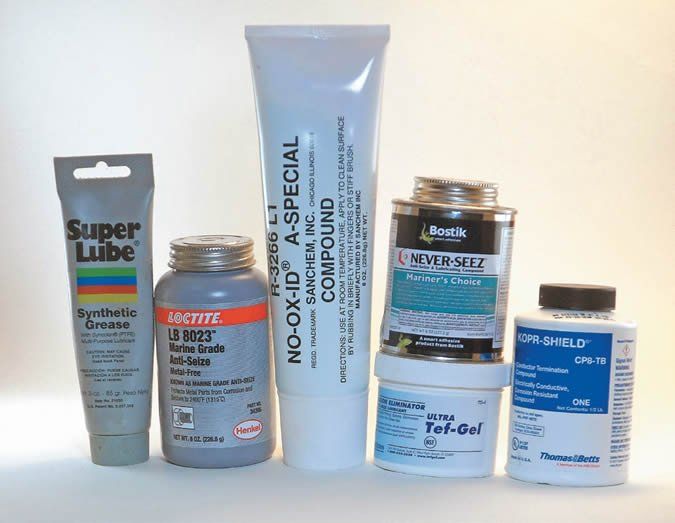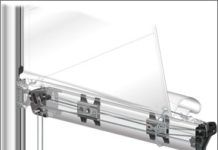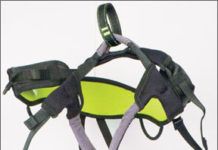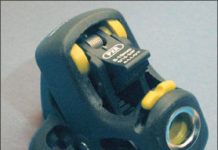Testers Examine Running Rigging Options
Today's sailboat owner faces myriad options when shopping for running rigging. When faced with so many choices-from lines made with the old standby materials like polyester to the newer high-tech ropes made from materials like Vectran and Spectra-it's hard to know which one would make the best mainsail halyard, best afterguy, or best genoa sheets. To find out, Practical Sailor tested 26 different varieties of braided rope from four manufacturers: Yale Cordage, Samson Rope, Novatech Braids, and New England Ropes. With so many lines to consider, we grouped the products by material and construction, sorting them into three fairly distinct performance groups (low, mid, and high tech) based upon their fiber content. The ropes were evaluated on their elongation, abrasion resistance, and handling characteristics. Ultimately, when all the stretching, abrading, and coiling was done, testers were able to find some clear choices based on price range and offer some general guidance for those who are shopping for new cordage.
Mailport: November 2010
Letters to Practical Sailor from our readers. November 2010's topics include cleaning products, sail hardware, galley stoves and anti-fouling paints.
PS Advisor: Rig Loads and Reefing Lines
Recently, while working to add third-reef controls to the mainsail reefing on my Morgan 382, I realized I had no idea how to calculate loads and, therefore, no concept of the size and strength of hardware to install.
The State of the Main: A Look at Sail Materials and Sailmaking Methods
Sails are a fascinating engineering statement, and when all is said and done, whats sought after is the lightest material possible that will neither stretch nor tear as it withstands the ravages of wind-induced pressure, vessel righting moment, and harassment from sunlight, chafe, atmospheric deposition, and other deteriorating effects. Practical Sailor toured sailmaking facilities and talked to several pros in the know to find out what sail materials are best suited for cruising, racing, and passagemaking. While cotton cloth lies well astern as a sail material, Dacron-which has been powering boats for five decades-has yet to be relegated to the junk pile. However, those willing to pay more to optimize performance have a wide range of just-out-of-the-lab, high-modulus material options to choose from, including high-modulus materials like Kevlar, Spectra, carbon, Vectran, North Sailss Cuben Fiber that are strung into high-end sails in much the same way that carbon fiber is used in a hull skin.
The Best Sailing Gear of 2010
Practical Sailor offers the annual selection of Editors Choice products for the Gear of the Year 2010 lineup. We hope the list will guide you through the dizzying array of gear at the fall boat shows, or at least help you whittle down your wishlist for Santa. The roster covers a broad spectrum of products-from gadgets for measuring speed to a performance multihull built for speed-that have bested their peers in our tests. The lineup includes gear from Spinlock, Brion Toss, Lopolight, Selden Mast, DuBarry, Keen, Standard Horizon, and Mastervolt. It covers LED navigation lights, bosun chairs, footwear for sailors, and marine electronics. Boat maintenance products from Polymarine and Interlux also made the list.
SpeedsealLife Puts a New Spin on Keeping Cool
Picture this: You fire up the iron jenny in preparation to exit a crowded anchorage. As the anchor slides onto the bow roller, the engine overtemp alarm shrieks a noisy reminder that youve skipped item number 2 on your pre-departure checklist-open the engine cooling water seacock. Your water-pump impeller typically would be toast at this point, but youve got an ace up your sleeve, SpeedsealLife. So you simply duck down below, open the seacock, verify the engine temp is good, and then continue on your way. At your destination, you check the impeller, verify that its fine, and life is good.
Practical Sailor Tests Bosun Chairs and Harnesses
Practical Sailor recently took a look at nine different bosun chairs and bosun chair alternatives to determine which ones are worth recommending to the sailor facing a repair project high above the deck and which ones wed drop into the nearest dumpster. Included in this test were products from ATN, renowned-rigger Brion Toss, Black Diamond outdoors sports company, sailing hardware-maker Harken, French yacht-equipment manufacturer Plastimo, and Spinlock, a company that specializes in deck hardware and personal safety gear. While none of the products, which were bench tested and evaluated in the field, would ever be considered comfortable, several fit the bill for getting crew to the masthead (and down) safely and offer the features necessary for working aloft. In the review, we also give a rundown on tips and the essential techniques for going aloft safely.
Eight Sailboat Cam Cleats Tested on Doomsday Device
Practical Sailor frequently tests sailboat cam cleats and their applications and even developed a machine for testing cleats: Doomsday. For this test we requested production cam cleats designed to handle 3/8-inch line and received products from Harken, Selden, Ronstan, Garhauer, Schaefer, and Spinlock. The Doomsday machine runs the cleat through a series of tests to evaluate fuzz, neck, and abrasion, with results showing what we can expect from a cleat after a season of use. The models tested are just a sampling of the range of cam cleats offered in various sizes and materials. A racing sailor, who probably uses cam cleats more frequently than a cruiser and who is keen to keep weight down should consider a composite model. At the other end of the spectrum, a cruiser who is more concerned about durability should consider one of the heavy-duty cam cleats in the test.
Cape Dory 25 Do-It-Yourself Refit
Cape Dory sloops-even those like the 25, which was not designed by Carl Alberg-have one of the most loyal followings among production boats. These loyal owners, added to a reputation for quality construction, enables Cape Dory boats to hold their resale value well, making them prime candidates for a do-it-yourself project boat like Practical Sailors test boat, Satori, a 1981 Cape Dory 25.Satori was purchased in 2008 in Sarasota, Fla., for $1,500. Although structurally sound for a boat her age, the interior had been gutted.Satoris sale price included an inventory of like-new sails, a new 5-horsepower Nissan outboard, and ground tackle. Completely rebuilding a boats interior would seem daunting to many, but Satori owner Jon Perkins is a carpenter by trade so he had the tools, resources, and know-how to get the job done. Cape Dory is an ideal fixer-upper boat, if the owner is up for the project. On today market, the Cape Dory 25 can fetch $3,000-$8,000. The pocket cruiser is also an excellent boat to fix and sail as a nice weekend cruiser for a family or a coastal cruiser for a couple.
Practical Sailor Takes a Close Look at the State of Boat Cleats
Boat cleats are an elegantly simple yet essential piece of marine hardware. Yet, after scrutinizing cleats at the Annapolis and Miami boat shows, it appears that while there a few innovative designs and tried-and-true classic models, many builders are using sub-par installations. The shape of a cleat needs to take in the significance of how a cleat locks a line in place and yet still allows a crew member to control the easing or snubbing process. Proper topping and backing cleat plates can greatly improve cleats durability and long-term performance. Some hide-away cleats or pop-up cleats have water drainage issues and less-than-robust support structures. Other designs use the less-secure rings and eyes instead of proper cleats.













